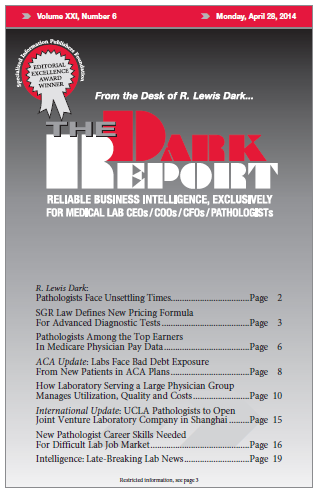CEO SUMMARY: One section of the federal H.R. 4302: Protecting Access to Medicare Act of 2014 is getting positive reviews from many lab experts. The law defines advanced diagnostic tests (ADTs) and directs CMS to assign a temporary HCPCS code and use list prices to pay labs for such tests while it is determining reimbursement …
New Pricing Formula for Advanced Diagnostic Tests Read More »
To access this post, you must purchase The Dark Report.


